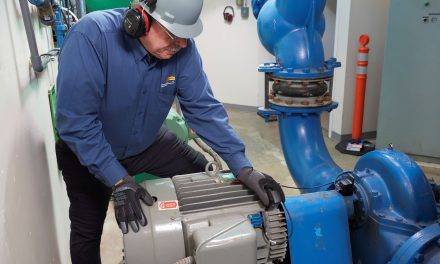 Every year millions of workers are injured on the job by one of their most trusted co-workers; their tools. With one in ten British employees working in the manufacturing industry and dealing with tools on a daily basis, it is more important than ever that tool and equipment are used in a safe and correct manner.
Every year millions of workers are injured on the job by one of their most trusted co-workers; their tools. With one in ten British employees working in the manufacturing industry and dealing with tools on a daily basis, it is more important than ever that tool and equipment are used in a safe and correct manner.
Elements of the £14.2bn that society spends on workplace injuries every year are an unnecessary and clearly preventable cost. Snap-on Industrial (UK) is a tooling solutions specialist which actively encourages awareness and best practice to the manufacturing industry, informing them of the dangers of incorrect tool use through their ‘Right Way Every Day Safety’ campaign. Almost 50 years old, Snap-on Industrial fully understands the safety and performance benefits of correct hand and power tool use, as well as the inherent dangers of incorrect use.
Eric Bright, product manager at Snap-on Industrial UK commented: “Our experience has taught us that the main reasons people work unsafely is a result of rushing to meet deadlines, to finish the working day on time, fatigue from working extended periods without enough rest, frustration at a particularly complicated job or a lack of skill, or the complacent worker who thinks, ‘I’ve done this a hundred times before, I don’t need to follow safety guidelines’.”
Eric has offered his top tips on how to work safely and correctly with tools, because work injuries from tools can be prevented:
1. There are three key reasons why people are injured by hand tools; modification, improper maintenance and misuse. The 3 M’s of tool injuries.
Modification: If the tool selected for a job needs modifying in any way, it is the wrong tool for the job. This includes, changing a tool’s structure, design, or adding attachments not intended for that tool. With the time spent modifying the tool, along with the time spent off work from resulting injuries, it would be far more cost-effective and much safer to simply purchase the right tool for the job.
Improper maintenance: There is no excuse for improper maintenance of a tool. It is the responsibility of the worker to keep all their tools clean, in good condition, and to check for broken or cracked tools on a daily basis. For example, it is NEVER acceptable to use a chipped screwdriver, or a hammer with dents, cracks, chips, mushrooming or a loose or damaged handle.
Misuse: Using the wrong tool for a job, or using the right tool but in the wrong way, is likely to lead to injury. This can include, applying excessive leverage to a ratchet or using the wrong size or type of pliers for the job; there are over 80 different styles of pliers and it is critical that the one used matches not only the job, but also the worker using it.
2. A screwdriver is the most commonly used, and misused tool. It is not designed to function as a pry bar, chisel or punch, but to simply turn fasteners, and yet workers insist on using it as a multi-purpose tool. The Snap-on team has witnessed many instances where shards of metal have got stuck in the soft tissue of a worker’s hands as a result of ill-use.
To avoid such injuries only use quality screwdrivers for their intended purpose. A professional grade screwdriver will be designed with:
• Chrome shank and a vapour blasted tip
• Hex bolster and round shank
• An ergonomic grip for comfort and power
• A contoured thumb stop
3. When working on a ‘hot job’ workers must always use a properly insulated tool. The commonly used rubber or vinyl coated tools will not necessarily provide appropriate insulation, workers should always use tools made from composite materials to properly protect against incidents such as electric shocks.
4. Of the 10 million people suffering hearing loss in the UK, almost 4 million are of working age and are likely to have suffered incident-related hearing loss. It is therefore crucial, when working with pneumatic drills, rivet guns, etc. that sufficient hearing protection is worn at all times. Because of their intense frequency, even short periods of exposure to these sounds can cause severe or permanent hearing loss.
Aviation engineers and ground handling staff must take extra caution as the noise on a flight line can come from many areas. Aircraft are only one source of noise, APUs, fuel trucks, and baggage handling equipment must also be considered when using hearing protection.
5. A knowledgeable and experienced worker will have a tool box large enough to carry the right tools for every job. Safety should not be comprised because it is easier or cheaper to have a smaller toolbox with ‘modified’ tools that can fit any job.

